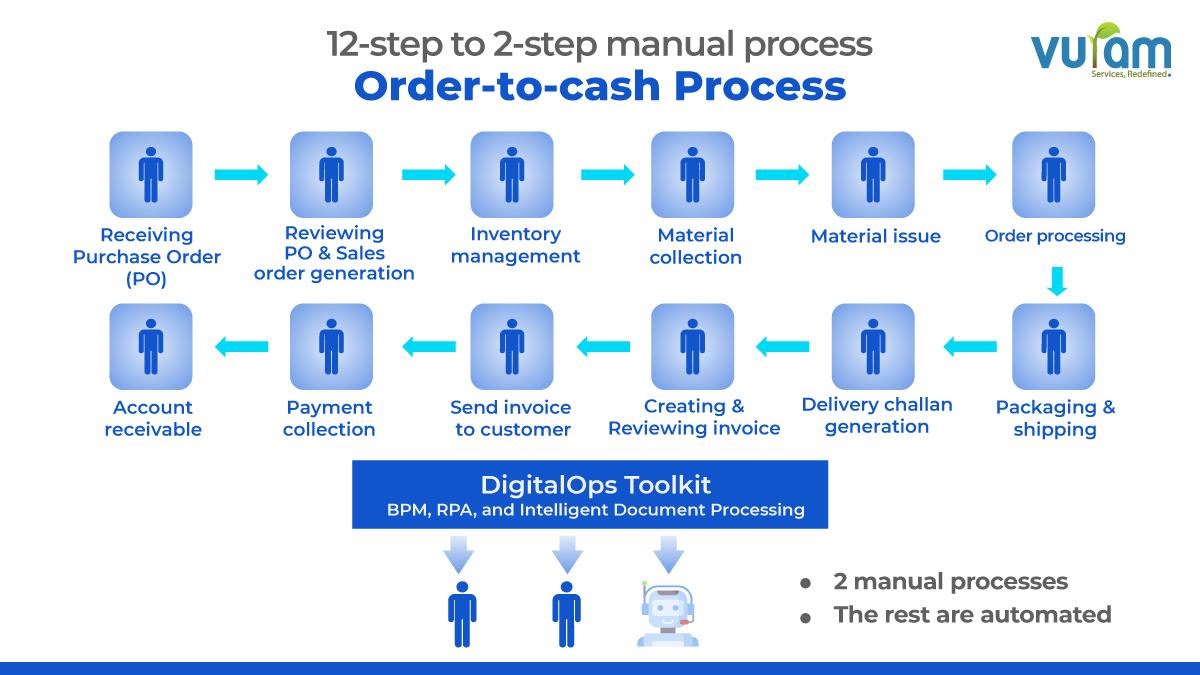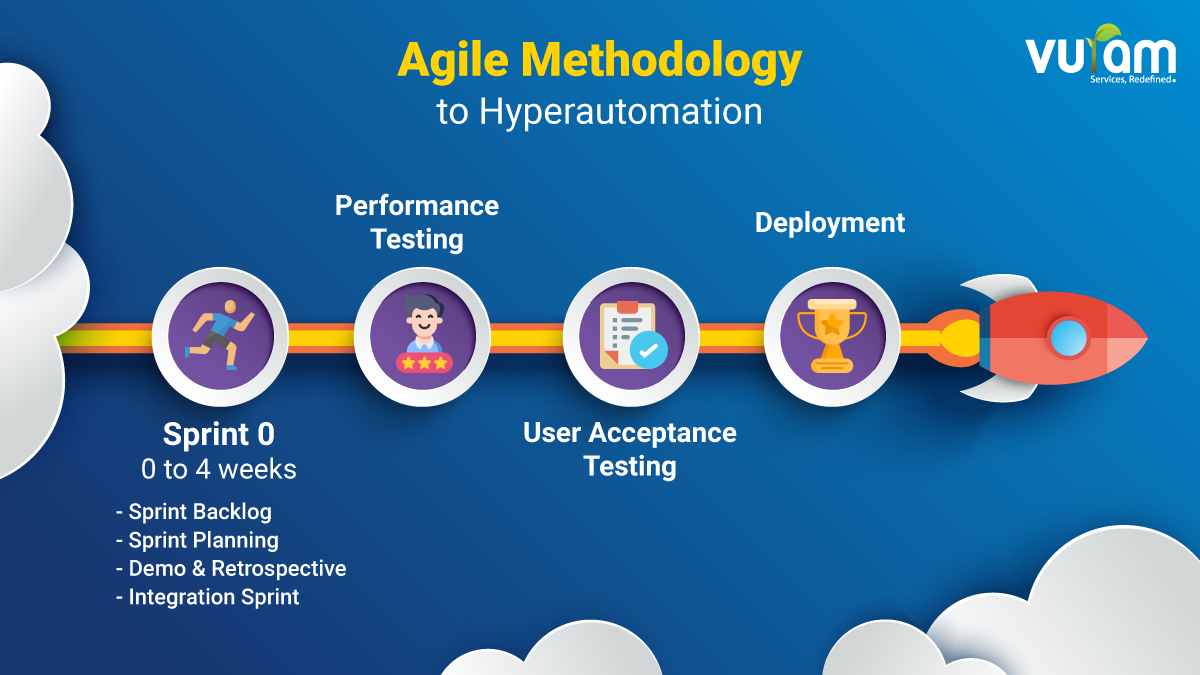Reliance on a single technology as a lifeline is a futile battle now. When simple automation no longer does the trick, delivering end-to-end automation needs a combination of complementary technologies that can give a facelift to business processes: the digital operations toolbox.
According to a McKinsey survey, enterprises that have likely been successful with digital transformation efforts adopted sophisticated technologies such as artificial intelligence, Internet of Things or machine learning. Enterprises can achieve hyperautomation with the digital ops toolbox, the hub for your digital operations.
The hyperautomation market is burgeoning: Analysts predict that by 2025, it will reach around $860 billion.
The toolbox is a synchronous medley of intelligent business process management (iBPM), robotic process automation (RPA), process mining, low code, artificial intelligence (AI), machine learning (ML) and a rules engine. The technologies can be optimally combined to achieve the organization’s key performance indicator (KPI) through hyperautomation.
The hyperautomation market is burgeoning: Analysts predict that by 2025, it will reach around $860 billion. Let’s see why.
The purpose of a digital ops toolbox
The toolbox, the treasure chest of technologies it is, helps with three crucial aspects: process automation, orchestration and intelligence.
Process automation: A hyperautomation mindset introduces the world of “automating anything that can be,” whether that’s a process or a task. If something can be handled by bots or other technologies, it should be.
Orchestration: Hyperautomation, per se, adds an orchestration layer to simple automation. Technologies like intelligent business process management orchestrate the entire process.
Intelligence: Machines can automate repetitive tasks, but they lack the decision-making capabilities of humans. And, to achieve a perfect harmony where machines are made to “think and act,” or attain cognitive skills, we need AI. Combining AI, ML and natural language processing algorithms with analytics propels simple automation to become more cognitive. Instead of just following if-then rules, the technologies help gather insights from the data. The decision-making capabilities enable bots to make decisions.
Simple automation versus hyperautomation
Here’s a story of evolving from simple automation to hyperautomation with an example: an order-to-cash process.

Image Credits: Vuram
The traditional process involves intense collaboration among different teams including sales, inventory, order fulfillment and finance. With simple robotic process automation, we are looking at emails for invoices or bots performing repetitive tasks that humans do, say, inventory management and payment collection. Neither the teams nor the technologies talk to each other.
With a hyperautomation approach, the process becomes a well-orchestrated and automated one with sophisticated technologies. With a digital ops toolbox, a 12-step manual process is reduced to a two-step manual process.
Let’s look further at the above example. We know the process is time- and people-intensive. The invoice data has to be reviewed manually, leaving room for human error. With intelligent document processing, the process is fast-tracked and the intelligent bots leave no room for error. Humans come into the picture for packaging and shipping and to manage exceptions.
A combination of technologies like business process management (BPM), RPA and intelligent document processing streamlines the process so that the entire process is transparent. The teams know what happens in the workflow at all times.
A deeper look at the digital ops toolbox for hyperautomation

Image Credits: Vuram
iBPM: Intelligent business process management could be termed as a more pleasant, more advanced version of traditional BPM, which is complex and requires extensive coding and human power to interpret vast amounts of employee data and process it to draw actionable insights.
iBPM aims to resolve this issue by seamlessly incorporating technologies like machine learning, big data mining, cloud computing, etc. It enriches decision-making, data analysis, workflow and business monitoring while continuously striving to optimize the process and bring in increased efficiency at faster rates and lower costs.
RPA: Robotic process automation helps companies automate mundane, time-consuming tasks like data entry, email parsing, scraping web data, straight-through processing of customer orders and more. The software bots act as your employees’ best digital companions.
Process mining: In process mining, the information is extracted from files of existing enterprise resource planning systems, spread\sheets, databases or any custom software. These files are called event logs. The data from these logs are visualized in workflows to discover, monitor, analyze, compare and optimize the current processes.
With process-mining tools, you get a complete, fact-based picture of what is happening and what needs improvement; it further helps in continuous monitoring and optimization, transparency and visibility.
It is used across all business functions, including sales, IT services, finance, auditing, logistics and more.
Low code: Low code is a game-changer when it comes to application development. With analysts predicting that it will contribute to more than 65% of software developments by 2024, low-code platforms are essential for driving digital transformation.
For starters, low code is a modern-day approach to software development that involves minimal coding. Low-code platforms eliminate the need for writing code and instead adopt visual, drag-and-drop interfaces and reusable components and templates. How does it help? Want a custom-built app to manage the changing market conditions? Get it built in weeks!
Machine learning: ML algorithms imitate human actions to learn from historical data and improve accuracy for future outcomes. One of the best examples is speech recognition software that converts speech into text. Think of our voice assistants on our phones and laptops, whom we literally “talk” with to get things done, whether finding information on the internet or responding to commands like “schedule a meeting” or “print the invoice.” ML is being used in multiple industries for medical diagnosis, image processing, prediction, classification, etc.
Artificial intelligence: Technology has made our lives simple and easier. When we shop for our favorite items online, the application suggests things aligned with our interests. When we type a document, autocorrect changes typos. When we want to reach our destination quickly, we open the map app on our phone and, voila, we have the best route suggestions based on the traffic. The underlying technology in all these is AI.
AI leverages machines to mimic human intelligence. The AI algorithms imitate the human mind and perform tasks by analyzing the data and making decisions, solving problems, making predictions, learning and adapting to a variety of tasks.
Rules engine: Rule engines are key to building a customer-centric infrastructure for instant, personalized and targeted decisions. As the name suggests, a business rule engine is a centralized rules repository that makes decisions based on predefined rules, helping to automate complex processes.
Consider the example of online retailers again. They must decide whether a customer qualifies for free shipping or an additional discount. Organizations use BRE to stay flexible with the changing market conditions, adhere to the changing regulatory framework and improve efficiency in decision-making.
Best practices for implementing a digital ops toolbox
Onboard your business users and stakeholders: Did you not get the expected ROI from hyperautomation investments? The reason could be because less-than-ideal technology from the digital ops toolbox was imposed on a process. Moreover, business processes today are siloed across the enterprise, and there is a compelling need to redesign, streamline and eliminate inconsistencies.
A significant reason why organizations fail to realize the expected outcomes is the result of a wide gap that exists between stakeholders’ expectations and actual results. Huddle your teams and take them through a series of sessions on hyperautomation and the digital ops toolbox; make them understand where and how they fit into this journey of automation. Once the business users are convinced and onboarded, your discussion on process mining, mapping and requirements gathering becomes much easier. After this, you will get 80% to 90% accurate use cases and the best KPIs derived to proceed further on the automation journey.
The more the users understand, the more pain points and bottlenecks come out during the discussions. It is important to evaluate the fit of processes for hyperautomation so that we can direct teams to only the qualified processes and prioritize them so that organizations can optimally allocate their budgets.
Build a business case and always make sure:
- The solution is tied to the business objectives and enterprise technology strategy.
- The scope is approved, published and managed.
- Project expectations are realistic and sustained.
- Project team skills are appropriate and available.
- The approach is proven and scalable.
- Communications are effective and continuous.
- Executive sponsorship is strong and visible.
- The system is sustainable by the customer.
To address the above issues, a strong business case is required to justify the cost of change.
Pick the right technologies before you invest: There are more than 100 technologies in the market that satisfy the digital ops toolbox. But you need to pick the right sets of tools to implement your hyperautomation journey. Once you derive your best and optimized process flows and your requirements are firm and ready, categorize your requirements according to, but not limited to:
- Vendor capabilities: market presence, leadership, market share.
- Product capabilities: one toolbox that satisfies your technology needs.
- Financials: total cost of ownership, licenses, maintenance, support.
- Platform support: OS, hardware, database, enterprise architecture fit.
- Strategic and business fit: industry experience, domain frameworks, prepackaged content.
- Usability and performance: quality, performance, scalability, multilingual, low code.
- To implement, select a minimum viable product. Start with iBPM as the backbone of any hyperautomation journey. Agile methodology works well here.

Image Credits: Vuram
Take one technology at a time and start adding other technologies to the main solution; start showing demos to stakeholders to showcase the difference between the “as-is” and “to-be” processes. Once the stakeholders realize the change, there is always a rush in terms of seeing a lot of new requirements sooner. Effective hand-holding and managing stakeholders at this time is very important to stay within your scope and not deviate much.
Assess the benefits
Finally, when you go live, you need to analyze the benefits achieved every three months to determine:
- What tangible and intangible benefits have you accrued?
- How do you champion the need for hyperautomation?
- Have the KPIs been met?
- What further optimization can be achieved?
You can see a typical example below on pre- and post-implementation data points for an insurance client on their endorsements and renewals business.

Image Credits: Vuram
Hyperautomation can give a complete overhaul of business processes. However, it comes with a lot of change management in an organization. This is very important to implement right away to achieve the business benefits envisioned during the initial planning phase.
The changes could range from merging departments to reducing full-time employees in one department and allocating them additional work in a different department. This depends on each organization and how they operate prior to hyperautomation, but hopefully these best practices will set you on the right course in your hyperautomation journey.
